Some of the links in this post may be affiliate links.
Hoya shepherdii (String Bean Hoya is the common name), is a delightful and easy to grow Hoya species with small, fragrant flowers. Other common names include string bean plant and green bean hoya, which are very fitting as soon as you take one look at the long, waxy foliage. The thick, narrow leaves on the beautifully pendulous vines are a site to behold!
Let’s get into some detailed care tips so that you can make sure you have a thriving, happy, and blooming Hoya shepherdii.
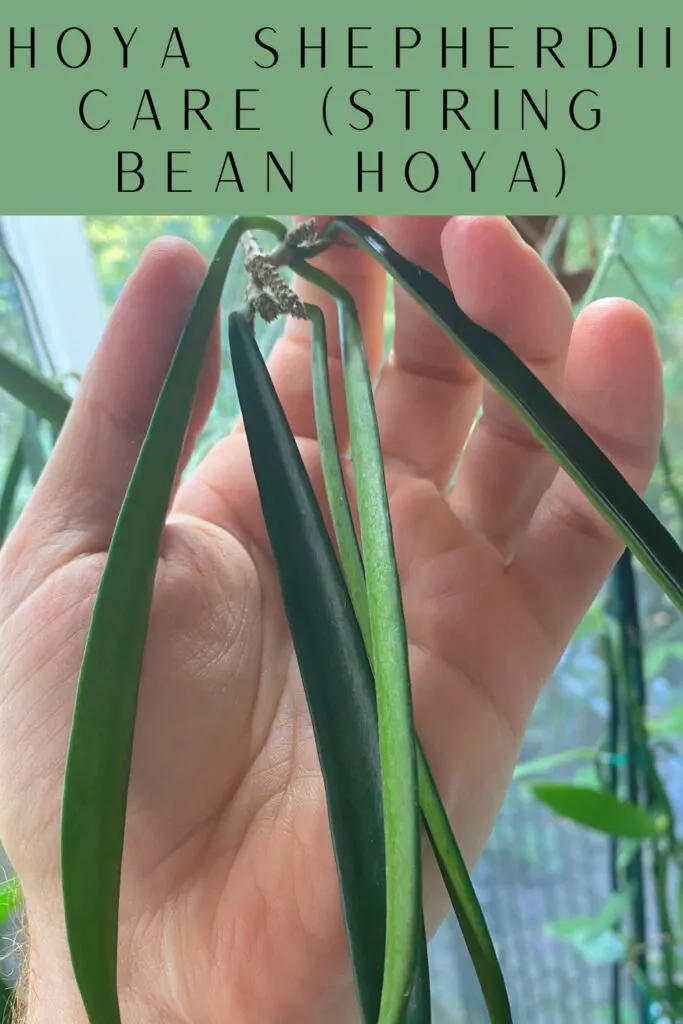
Table of Contents
HOYA SHEPHERDII CARE
Like any Hoya (or Wax Plant as they are commonly called as a whole), the care is very similar, and Hoyas are among the most forgiving, easy-care indoor plants.
Hoya shepherdii’s natural habitat ranges from Assam to East Himalaya, belongs to the Apocynaceae family of plants (milkweed familiy), and makes for an ideal hanging plant in the home.
Here are 7 tips with detailed information to help you be successful:
1. LIGHT
Give your plant a nice bright window that has plenty of indirect light at a minimum. I’ve found that a handful of hours of direct sunlight is beneficial for any Hoya.
Although they can tolerate lower light conditions, they will do much better in bright light.
An east-facing window, or even a west window, would be an ideal location.
If you’ve had your Hoya shepherdii for a while and it has not bloomed for you, try increasing the light exposure.
This is one of my freest blooming Hoyas, so make sure that you have enough light if you want flowers and a good growth rate.
My own plant blooms several times a year and is hanging in my sunroom right in front of a north window that has supplemental T5 fluorescent grow lights. This comes in handy in the winter time when days are short and dark!
Artificial lighting or grow lights work marvelously for Hoyas if you don’t have enough natural light in your home.
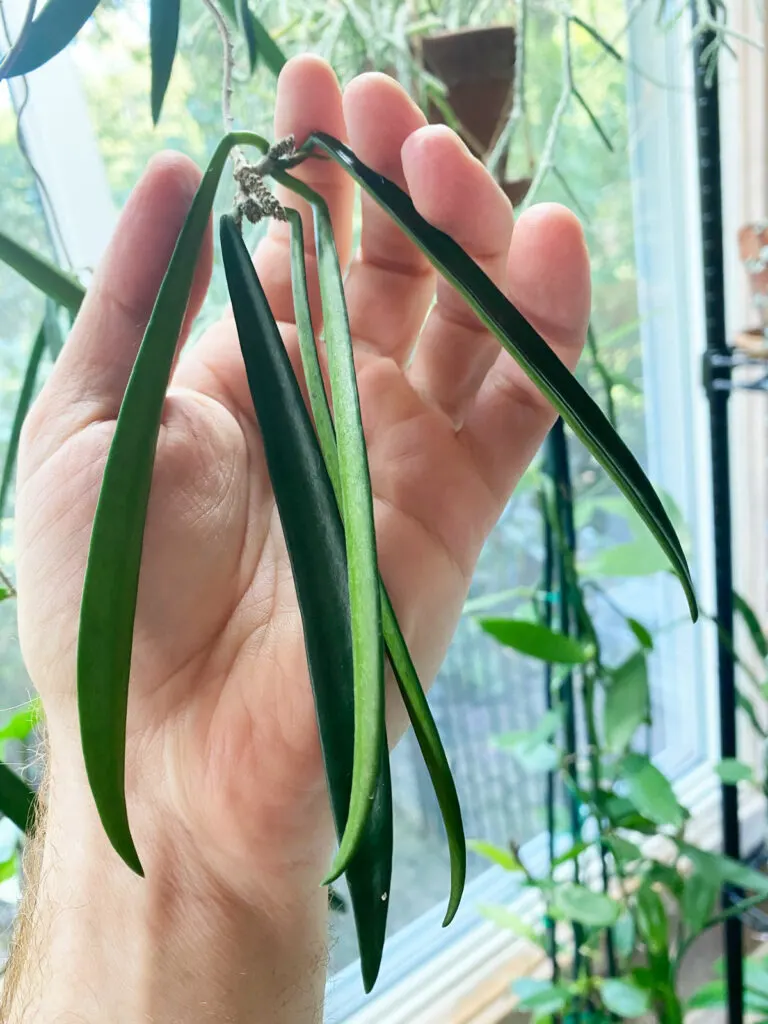
2. WATERING AND FERTILIZER
Proper watering and fertilizing practices are a central part of the care of any plant. For Hoyas in particular, make sure that you are watering thoroughly, but allow your potting mix to dry out completely, or almost completely.
If the surface of the soil feels moist, don’t even think about watering. I’d recommend allowing at least the top couple inches of the soil to dry out, before watering again.
Keeping your Hoya in waterlogged soil will increase the risk of root rot. I normally allow all of my Hoyas to dry out completely. Don’t wait too long though because even Hoyas with their succulent leaves can eventually suffer if you neglect them for long enough.
When you do water, water thoroughly and allow all excess water to escape the drainage holes.
I like to set my own plant in the sink when I water. I have my plant in a hanging basket, so watering in the sink is efficient and won’t make a mess in my sunroom.
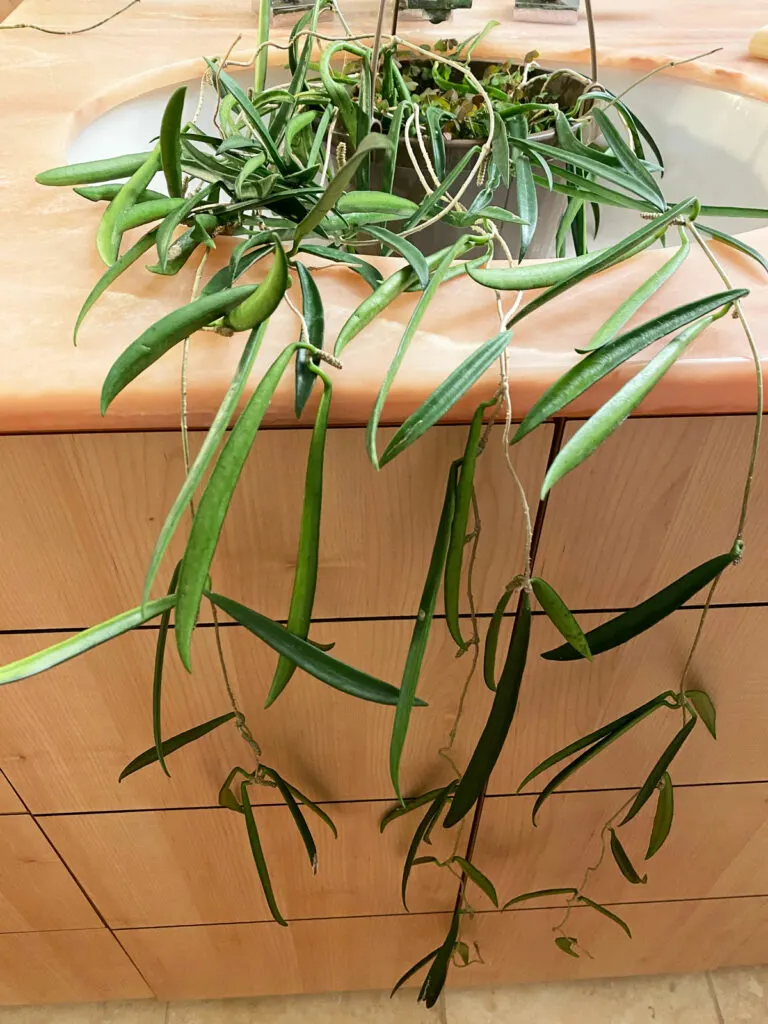
I fertilize my Hoya shepherdii, and all my Hoyas, with Dyna Gro Grow. It is an absolutely fantastic urea-free fertilizer that contains all of the micro and macro nutrients that are crucial for plant growth!
3. SOIL
Good drainage is a crucial aspect for all hoya plants.
I like to use 2 parts of a good succulent/cactus mix such as Espoma organic cactus mix, to which I add 1 part 1/4″
I specifically love the 1/4″
If you want an amazing mix to use right out of the bag, check out the amazing Hoya soil blend from Oh Happy Plants. This is an amazing mix and you will get 10% off at checkout automatically if you use my link.
4. TEMPERATURE AND HUMIDITY
Average indoor temperatures and humidity will be just fine for your H. shepherdii. If you are comfortable indoors, your plant will be too.
Hoyas are very easy going when it comes to humidity levels so no special attention is absolutely necessary, but they do appreciate high humidity if you can provide it.
I normally run a humidifier during the winter when the air can be painfully dry.
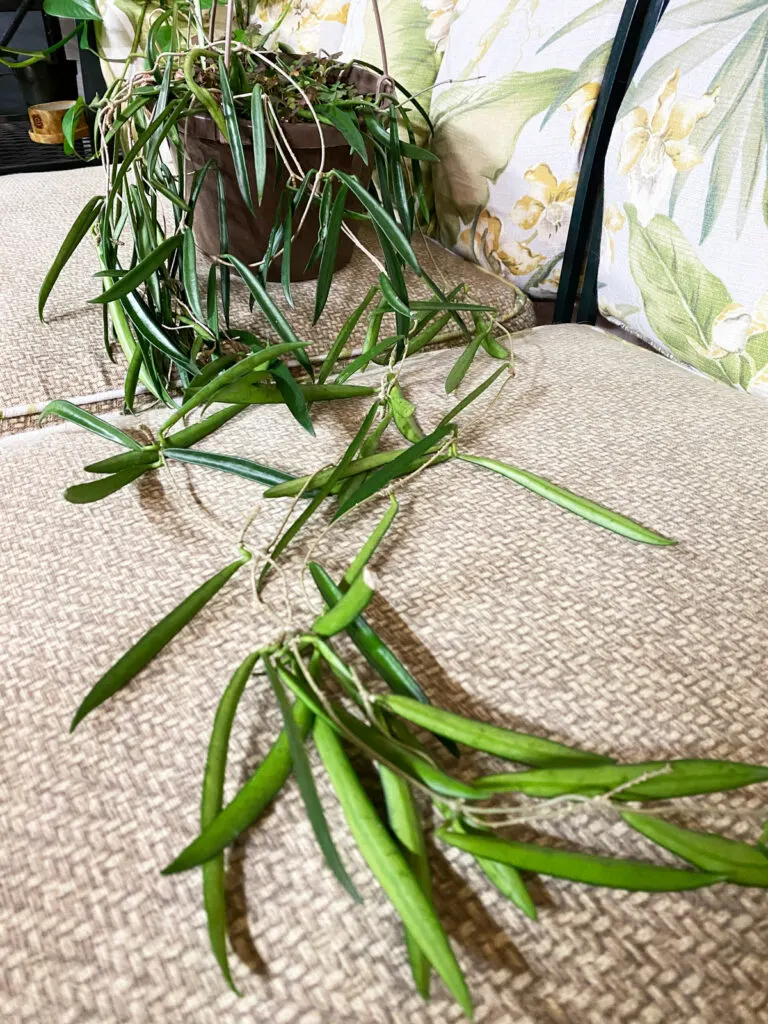
5. POT SIZE AND TYPE
Like any Hoya, your plant can stay in the same pot for many years. In fact, they like to be root bound and will flower better that way.
As far as the right pot type, you have many options. Terra cotta pots definitely will dry out faster than any other type of pot. If you tend to “overwater,” terra cotta may be a great choice for you, but many pot types can work.
If you’d like details on repotting, check out my guide on how to repot hoyas and also how to choose the best pot for hoyas.
You can repot anytime that you need to, but the ideal time would probably be around early spring when the growing season starts.
6. PESTS
Hoyas aren’t bothered by that many pests, but occasionally mealybugs, spider mites, and scale can be a problem.
If you have a mealy bug or spider mite problem, a good insecticidal soap (link to Amazon) will take care of your issue.
If you have scale, that can be tricky to deal with. Be sure not to miss my blog post on how to treat scale.
7. PROPAGATION
In order to propagate, simply take a stem cutting. They will root very readily in water, or you can insert directly into a small pot with potting mix.
If you are choosing to water propagate, as a general rule of thumb, I like to wait until the roots are about 1 inch long before transferring to potting mix.
FLOWERING
My Hoya shepherdii flowers profusely and often. The flower clusters are not as large as many other Hoyas, but they are still beautiful and have a sweet scent.
I love the creamy white flowers with pink centers.
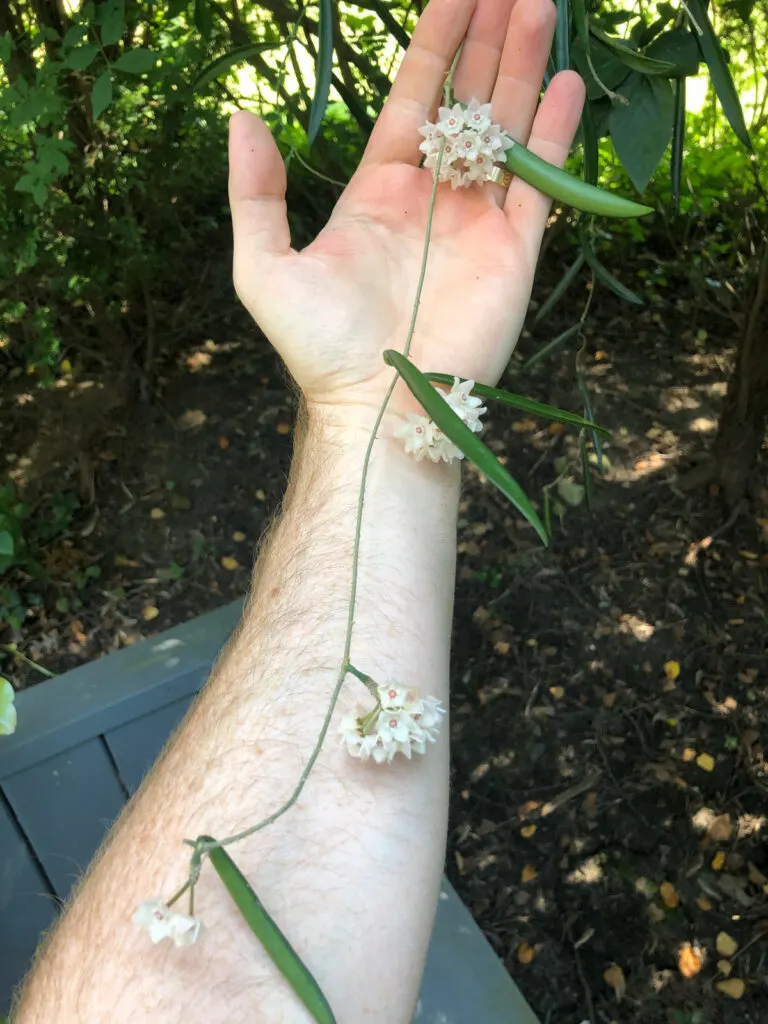
Sometimes I don’t even know that my plant produced new flowers until I smell them. The fragrance is so strong (especially when it is in full bloom) that it is very apparent even from other rooms!
One thing to remember about flowers on this plant is to never dead head or remove the flowering spur. After the flowers run their course and fall off, a spur will be left.
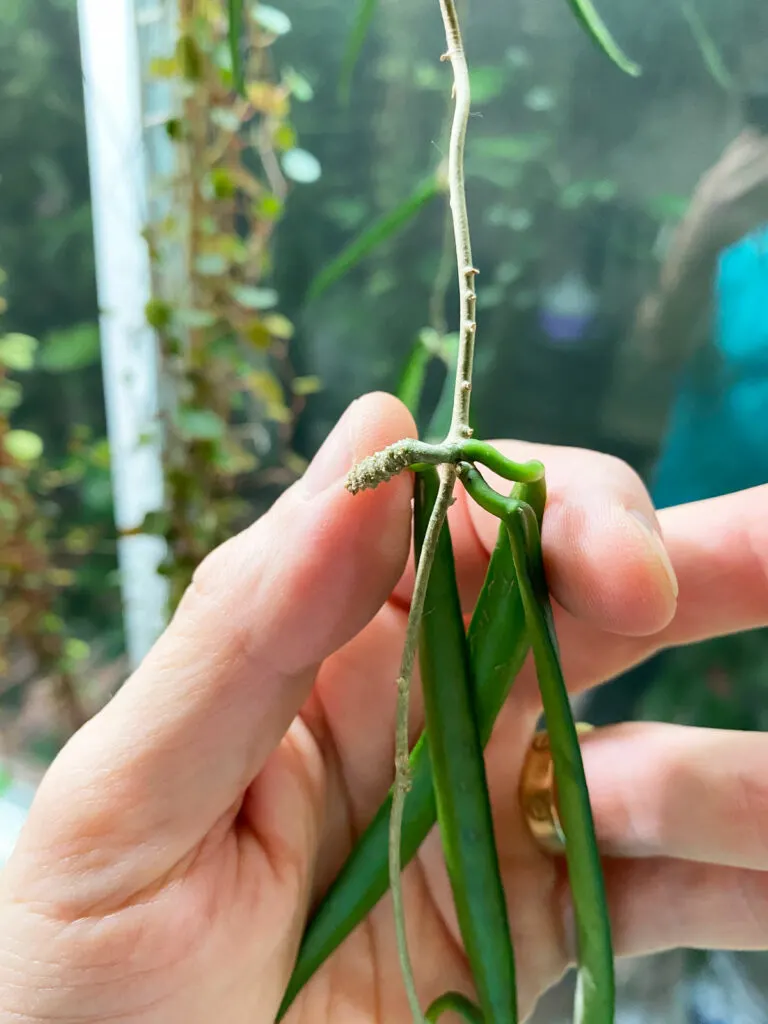
You can see the spur in the photo above right in front of my thumb. Your plant will continue to bloom from this spur in the future, so leave it alone and never cut it off.
Not all Hoyas produce these spurs, but most of them do.
HOYA SHEPHERDII VS LONGIFOLIA
Many will say that Hoya shepherdii is a synonym for Hoya longifolia, but the Plants of the World Online database from the Royal Botanical Gardens at Kew lists shepherdii and longifolia both as accepted species.
OTHER HOYAS TO GROW
Are you obsessed with Hoyas like I am? Be sure not to miss my blog posts on other Hoyas:

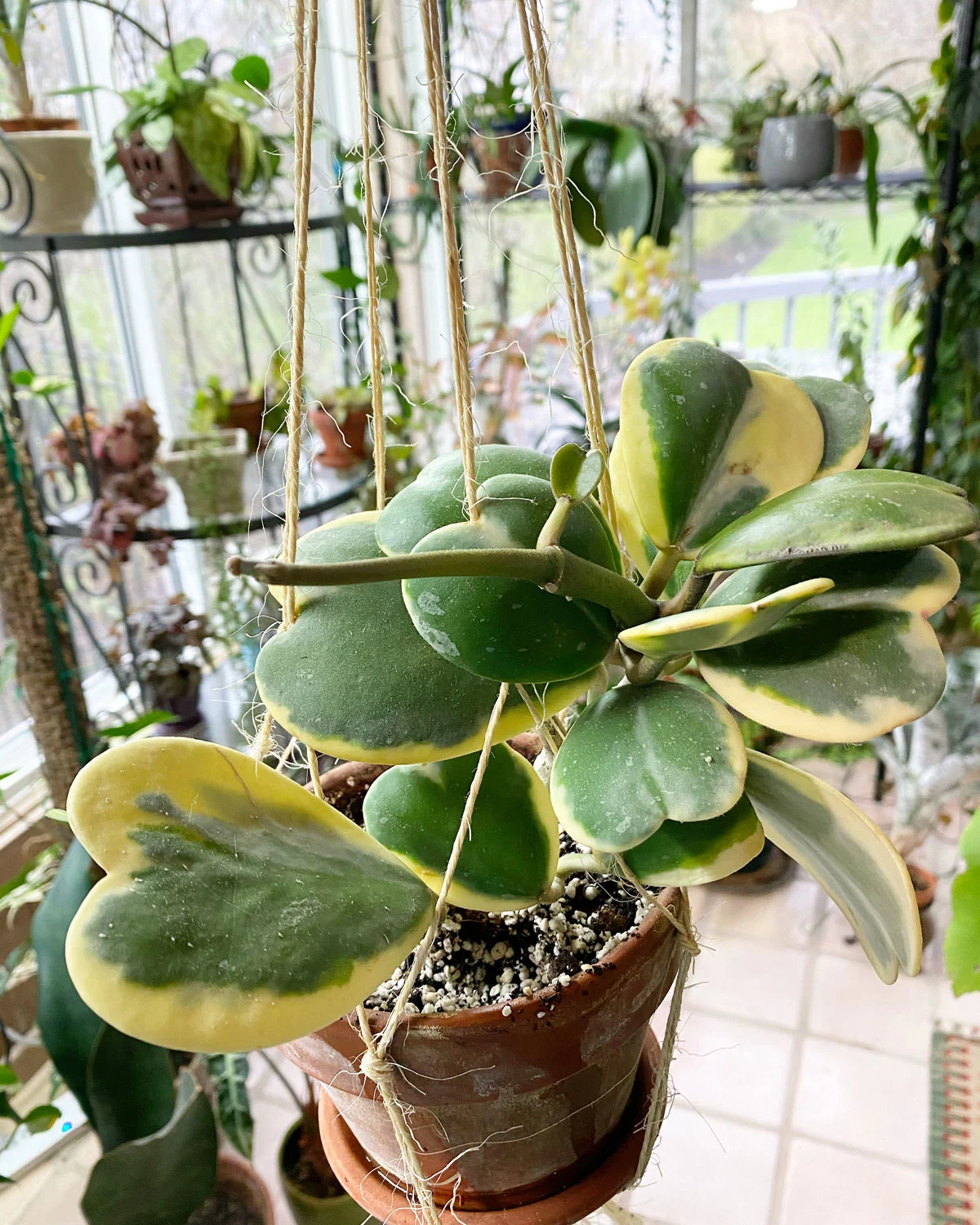
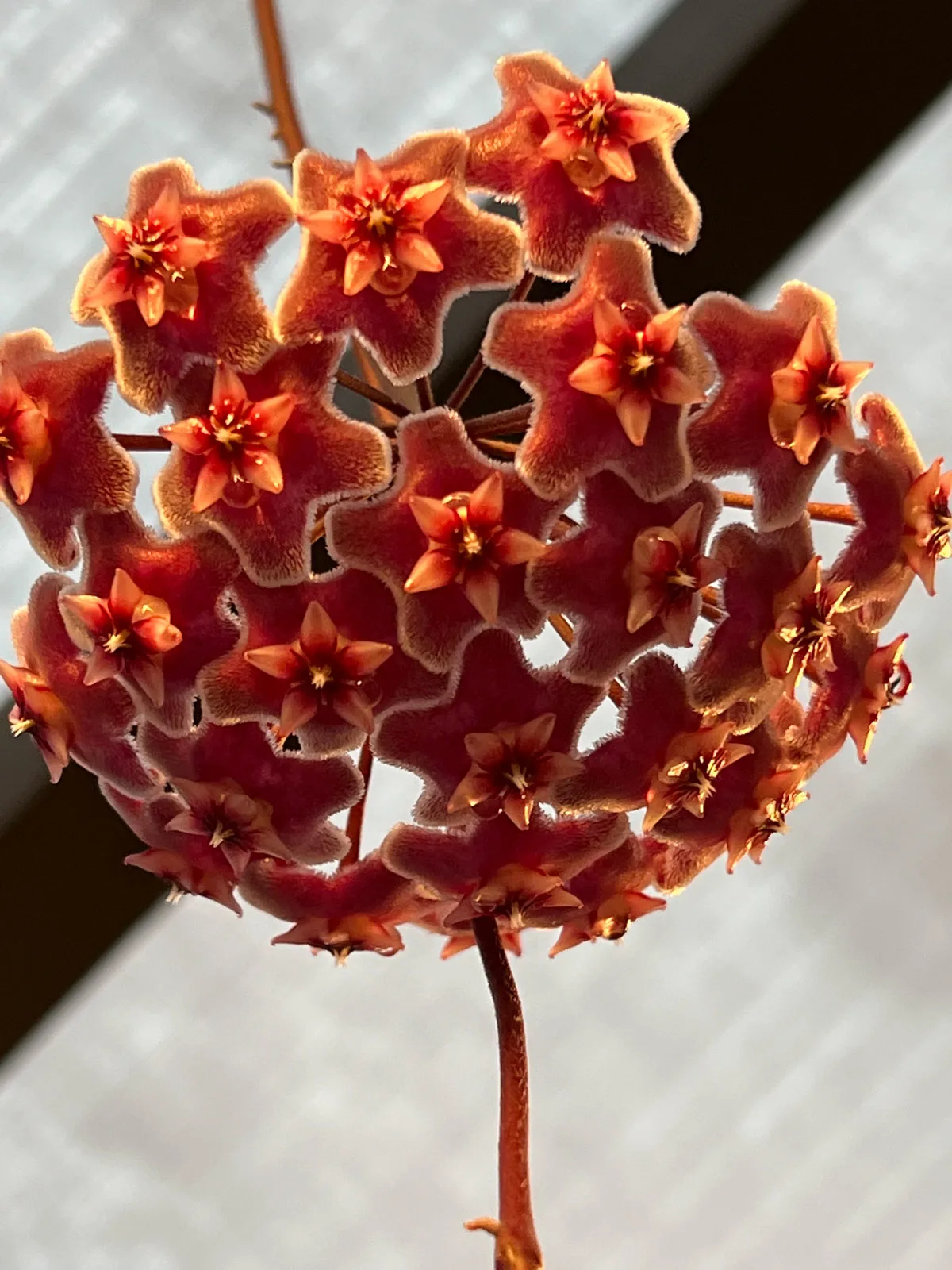
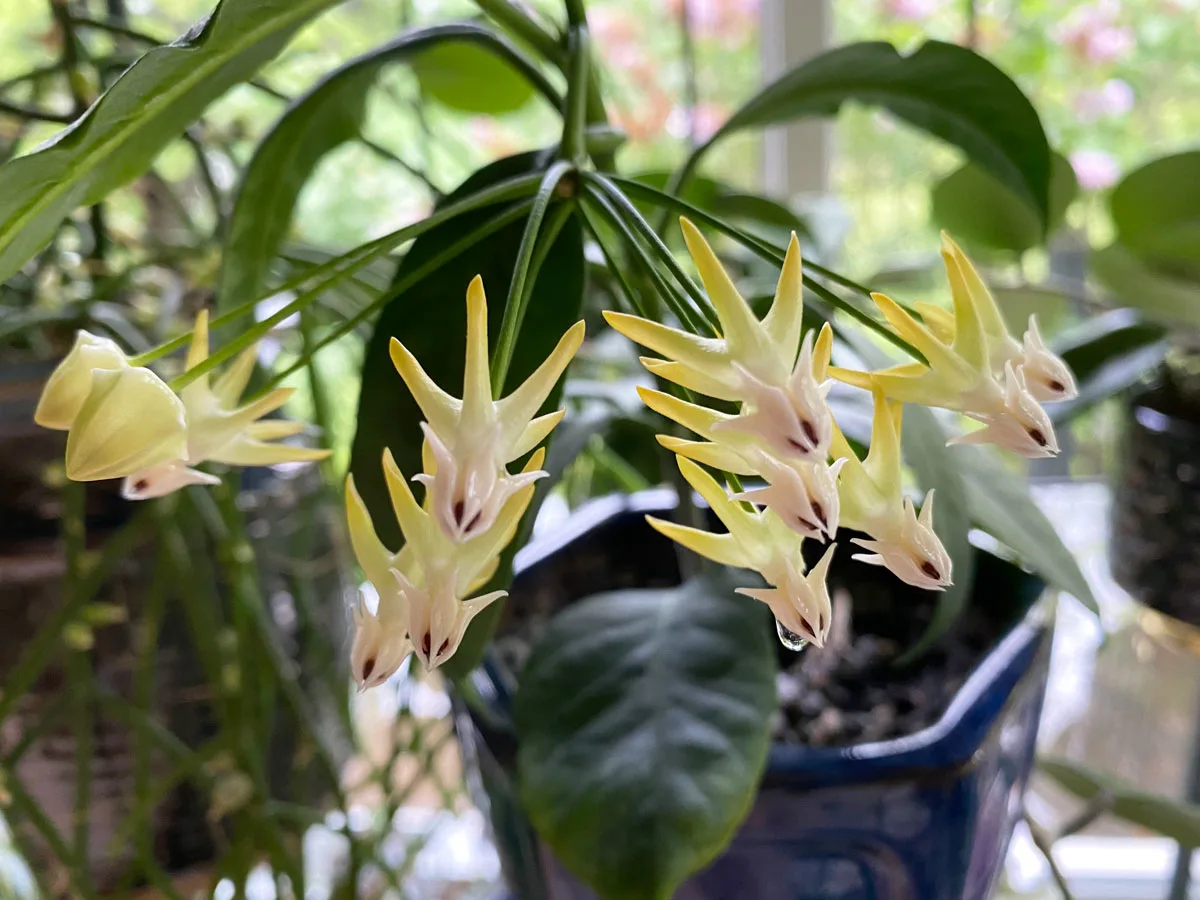
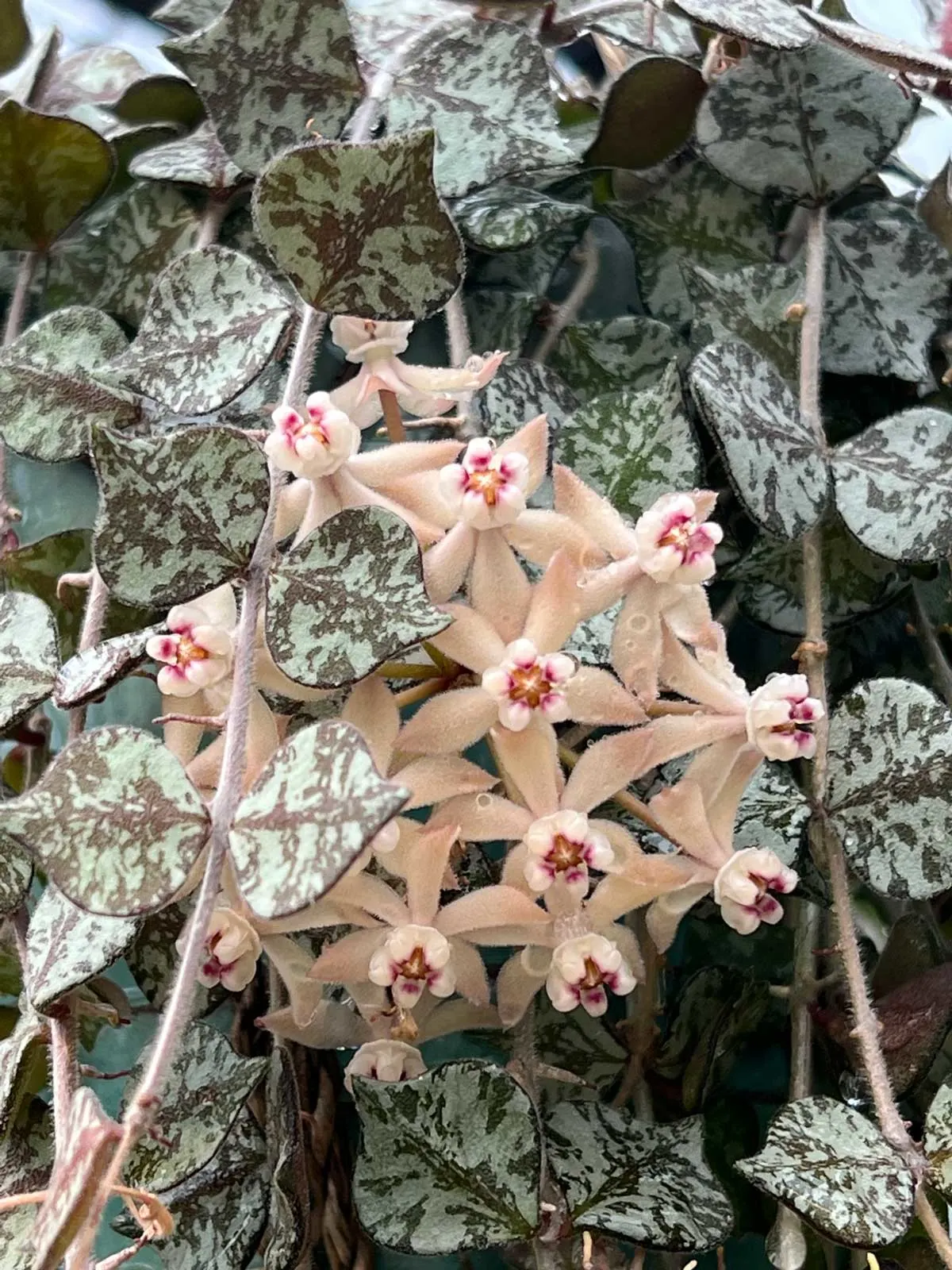
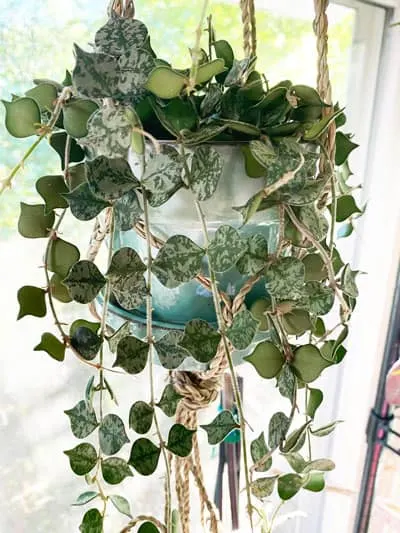
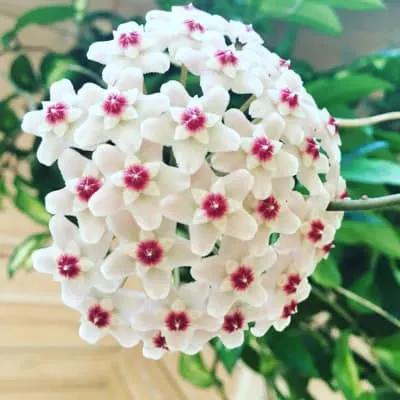
Chase
Wednesday 27th of April 2022
Hello! Thanks for the great information above. I actually re potted my shepherdii 4 weeks ago (I used your great information to do so) and everything was going well until a week ago the leaves are all semi soft. She is still wet and I definitely know she isn’t thirsty. I could have overwatered, but I’ve had her for over a year and I’ve never had this issue. She is MASSIVE and I am so worried! Also might I add I didn’t change the size of the pot and didn’t change the location. Any advice? Thanks so much in advance.
Raffaele
Thursday 28th of April 2022
Hi Chase! Does the new pot have drainage holes? What potting mix did you use? What old pot did you use, vs the new one?
Cathi Jones
Monday 24th of January 2022
I have a question. When you first buy a Hoya plant from a nursery, do you leave it in the nursery pot with the soil or do you repot it in the mix you have recommended? I have bought three Hoyas from a local nursery here in Tucson and have been unable to find a recommendation for what to do when your first buy plants.
Thank you for the information on the different kinds of Hoyas. I have learned a lot about these plants from reading the articles.
Raffaele
Tuesday 25th of January 2022
Glad you enjoyed the post Cathi! My general strategy is this. I don't rush to repot anything immediately unless it is extremely root bound and the plant is suffering. Especially Hoyas. If your potting mix that it came with is drying out in a reasonable amount of time, just leave it in the pot. As long as the plant is growing well and looking good, leave it in the pot that it came in. Hoyas like to be root bound so I often leave them in the same pot for quite a long time...even years. When they are extremely root bound, then go up a pot size. Keeping them root bound also will help encourage blooming. If you haven't seen this post yet, I have a post where I show how I repot Hoyas: https://www.ohiotropics.com/2021/05/24/how-to-repot-hoya-plants/. I hope this helps a bit and let me know if you have any specific questions. I also offer virtual houseplant consultations if you want more personalized, detailed attention: https://www.ohiotropics.com/work-with-ohio-tropics-2/